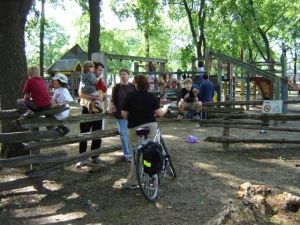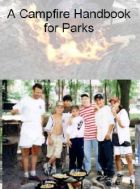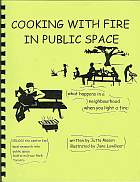

Pages in this Folder:

Related Folders:
See also Department Site Map
Support Provided by

Toronto Parks and Trees Foundation

This website has received support from celos.ca through the Trillium foundation.
Publications
Comments?
For the basics, see
- Website & Privacy Policies
- How To Get Involved
- The Role of the Park
Search options:
Department Site Map
Custodians:
 News 2015
News 2015
News 2015
From the October 2015 Newsletter:
Book recommendation: Transition to Common Work. Building Community at the Working Centre, by Joe and Stephanie Mancini
Joe and Stephanie Mancini founded The Working Centre in Kitchener in 1982. Thirty-three years later they’ve written a book about it. Much of what’s in the book is also helpful for any community park or gathering place, so CELOS has bought several copies for the rink house. The Kitchener Working Centre has become “a network of practical supports for the unemployed, the underemployed, the temporarily employed and the homeless, populations that collectively constitute up to 30 per cent of the labour market both locally and in North America.” The centre’s network includes a community bike shop, a café, a barter centre, housing units built with the help of homeless people, employment supports, public access computers and computer repairs and recycling, the city’s largest furniture and housewares thrift store, a market garden, and St. John’s kitchen, which daily serves free breakfast and lunch and is almost entirely staffed by users. And that’s only some of it. It’s used by well over a thousand people every day, and its hospitality and lack of condescension are legendary.
Supports for families and “community wealth”
The Working Centre book lists some of that centre’s additions to Kitchener’s “community wealth” – facilities built in large part by people who have been unable to get jobs, but who are very willing to work. Their list made us think about the additions to Dufferin Grove Park’s community wealth since 1993, when park friends and park staff began to work together: the adventure playground, the playground rain shelter, two bake ovens, nine gardens; an inexpensively renovated and practical rink clubhouse with eye-level windows, a woodstove, and two kitchens; the cob courtyard café; a restored field house available for Clay and Paper Theatre; a farmers’ market, skate loans, the Dan’s Table2 community dinner area – and that’s not even including the “additions to park wealth” at Campbell, Wallace and MacGregor parks, many of them generated by the same collaboration.
The Working Centre addresses the problems of the economy. In a smaller way, Dufferin Grove is a place that addresses the problems of raising children in an urban neighborhood. The frustration that can make parents feel that “raising small children is a thankless, exhausting job” assumes that families exist in a void. But the friendship that many families have found at Dufferin Grove shows that so much more enjoyment is possible, if the context is right. If the kids are engrossed in dam-building at the sand-pit all summer long, or are running free with their young park friends while their parents are catching up with their adult friends on a Friday Night Supper picnic blanket, or are playing little-kids’ shinny hockey every day before dinner, the game changes – buttressed by the “community wealth” that was built up here.
The building and unbuilding of community wealth at Dufferin Grove Park
The last newsletter told about the steep increase in the cost of running Dufferin Grove Park, now over $750,000 a year. (City management has not commented yet.) That increase only became steep when the long collaboration between park friends and park program staff was brought to a stop. Many park users e-mailed the ombudsman in 2010 when the co-operative park supervisor was removed (as a first step to the dismantling). The ombudsman said that unpopular management decisions were not in her sphere of influence – and the same was clearly true of our elected councillor, who did little to stop the process. Certainly the general manager of Parks, Forestry and Recreation stayed on message. She was quoted in the media, saying: “People are concerned that programming at Dufferin Grove Park is going to change, and I’m not sure why. The change in supervisors is in no way intended to change those programs.”
But in fact, everything changed. When the partnership between city staff and CELOS ended, staff were told that flexibility of tasks was mostly over. They must stick to their job codes. If they were baking cookies, they would not be watering plants. If they were serving at the Zamboni café, they would not be picking up litter inside the change room. The most glaring inflexibility is at the wading pool, whose staff are administered by a central unit, and whose monumental boredom is on display on cool days with four staff sitting in a group beside an empty wading pool – all four prohibited from doing anything in the park other than look at the pool, or talk to each other. The long-time diversity of tasks is gone.
Parents who care about their teenagers’ development should advise them not to apply for a summer recreation job. Who wants their daughter to learn, first thing, that the main freedom in a job is stretching her breaks to be longer? Or to learn that the concept “it’s not my job” is the handiest way to sort out your tasks in a day? Who wants their son to shrink his horizons until only a superior sense of his own grasp of rules remains, applied to almost every aspect of public space – having been drilled into him at his compliance training?
When there was a true staff/park-friends partnership, the park had youth odd-jobs programs, summer programs, newcomer programs, Dusk Dances, music, playground programs. Quite a few of the programs were put on by non-City groups, but they needed staff support. The staff were young people eager to work, and they put their various talents to use, expanding their range from wading-pool minding and rink guarding to improving the kitchens, helping with performances, and cooking large suppers in the wood ovens. In 2008 there were 14 part-time city staff and 3 CELOS contractors (all of whom shortly joined the staff as well). They helped create the park’s “community wealth” listed opposite.
In 2015, there are 51 people on Dufferin Grove’s part-time staff list. None are allowed the freedom to create anything new. The change is huge.
From the September 2015 Newsletter:
Sunday Sept 6th, 3-5 pm: Annual MORRIS DANCERS’ gathering
Toronto Morris dancers will once again finish their annual Labour Day weekend dancing (which they do in public squares all over the city) by picnicking at Dufferin Grove Park. Morris dancing dates back to resistance to early industrial conditions in Great Britain in the eighteenth century. The dancers often wear bells strapped to their legs; some are in blackface (this refers to mining, not race); some dance with swords. It’s very energetic, and exhilarating to watch. Groups from other parts of Ontario, NY State, sometimes even Britain, have been coming to this park for years on the Sunday of Labour Day weekend, after they give their free dance performances in other public outdoor spaces. At Dufferin Grove these groups dance for one another to show off their latest dances, and they eat masses of fresh park bread and herb butter and samosas, and make pizza at the bake oven. Everyone is welcome to come and watch the dances.
From the Summer 2015 Newsletter:
The new sitting area by the bake oven: “Dan’s Table #2”

the new tables, at Friday Night Supper
The picnic tables and benches, planters and trellises, and shade umbrellas are now in place. This was a project brokered by CELOS, and wholly funded by the GH Wood Foundation. The builder was Mike Conway, who is an artist as well as a carpenter (and it shows!). Park friend Pete Gaffney generously made his carpentry shop available to Mike. A special Saturday Night Dinner on June 20 inaugurated the new space, named “Dan’s Table #2,” in honour of Dan DeMatteis, one of the first cooks for Friday Night Supper (it began in 2003). The June 20 supper raised $830, after grocery costs were deducted. So the bake-ovens can be repaired. Those ovens are now 20 and 15 years old respectively, and they’ve developed a few trouble spots. Mike will wait until the weather cools down in the fall to climb into the smaller oven and repair the hearth bricks. The city may repair the bigger oven’s chimney, and the CELOS fund will renew part of its roof.
How to reduce “carding”
The practice by the Toronto Police of approaching random people and asking their name, address, destination, etc., and filling out a card, which is then filed in police reports, seems to be close to ending. For the record, even before carding became an official practice, it had been going on for a long time, also in Dufferin Grove Park. Police often went from picnic table to picnic table, or to any little group of youth, asking them questions – a process we called “fishing.” It became such a common event that in 2004, CELOS filed a Freedom of Information request for all such occurrences in the park between 2001 and 2004. We found that 58.5 percent of the almost 500 reports which we got through Freedom of Information had no valid (that is, lawful) reason for the stops, i.e. the reason given for the questioning was either “loitering” or a there was blank in that column. The cards of course did not specify race, but in our experience, “fishing” mostly involved people of colour.
Dufferin Grove friends and park program staff began to stand nearby when these police visits took place. Even though we were respectful and kept our distance and didn’t try to interfere, there were sometimes suggestions by police that if the observers didn’t go away, we might be charged with obstruction.
But it happened that one of the regular shinny hockey players at the rink turned out to be a lawyer who had written a whole book on the use of the “obstruct justice” charge by the police. He gave park friends and staff a little outdoor seminar on how to make it explicit to police that there was no intention of getting in the way or interfering, and therefore no occasion for police to lay a charge when observers were standing and watching.
Around 2007 the “fishing” visits slowed down in the park, and since 2010 they have been pretty rare. It may be that people stopping to stand nearby had an effect. There may be a temptation now for carding to continue unofficially even if it stops being a police policy. But when others stop and politely watch, this practice will remain under broader citizen scrutiny.
Talking to strangers

chatting over the playground fence
A city park, if it’s a pleasant destination for all sorts and ages of people, can be a kind of community centre where people can get to meet their neighbours (and in Toronto, those neighbours may hail from literally everywhere in the world – even better). Encounters are made easier by the absence of walls, so that people can watch the world go by for five minutes or five hours, without buying a ticket. And if park users are at the playground with kids or walking their dogs or skateboarding on the rink pad, they can talk to strangers who are doing the same activity, without embarrassment. One can meet interesting people, or not – there’s no commitment, such as at a social event, but there’s often surprise.
Cell phones and earphone music have reduced such contacts, but not everyone is texting or listening all the time, so it’s still possible to make new friends – and many Dufferin Grove users say they first met some of their long-lasting friends at the park. So did their children, collaborating in dam-building at the sandpit or waiting for their turn at the monkey bars or climbing in the cherry trees at Friday Night Supper.
One caution: now and then there’s a stranger who comes to Dufferin Grove but doesn’t understand that this urban park is part of everyday life for most people who come here often. An example: this past March, a mother who brought her two small children to the playground when the snow piles were still there, had an upsetting encounter with such a stranger. She had parked her sleeping toddler in his stroller beside one of the snow piles by the cob courtyard and followed his older brother to the monkey bars nearby, keeping an eye on the stroller to see when little kicking feet would announce her younger son’s waking. She suddenly saw a man bending over the stroller, and she hurried back over to see why he was there. It turned out he was on his cellphone talking to the police. Without looking around and noticing the mother nearby in the playground, he had concluded that he had just caught an incidence of child abandonment, and instantly called 911. The mother called 911 to tell them it was a false alarm, but the police said they are required by law to come anyway, and she must stay there to wait for them. When the squad car showed up 15 minutes later, the police gave the mother a lecture about staying within arm’s reach of her children, and “carded” her, presumably adding her to their list of at-risk parents. It was pretty obvious that none of the gentlemen involved in this transaction, from start to finish, had ever had to look after more than one small child (or perhaps had never looked after any children at all).
The mother, who continues to be part of the friendly kid scene at the park and whose children continue to thrive under her competent care, said she learned some things: (a) some strangers may be “risk vigilantes,” who feel that they don’t need to talk to a parent but can just diagnose a problem from a distance; (b) in such a case, it’s best to thank the stranger and leave the area before one is exposed to more foolishness – to avoid being carded for nothing. One ought not to stay and talk to such strangers, because they don’t understand….anything.
From the May / June 2015 Newsletter:
What works: a public enactment of a Ukrainian village wedding in the park
Mark Marczyk and Marichka Kudriavtseva met and fell in love during the Euromaidan protests in Kiev, Ukraine, when Mark was visiting there with the Lemon Bucket Orkestra. When Marichka and Mark decided to marry, they wanted to have their wedding in a public space, because that’s how Ukrainian weddings used to be performed. “That’s the way weddings were traditionally done. They weren’t in a hall or a private castle or anything. They were done in the streets,” Mark said. So they invited people via Facebook, and hundreds of Ukrainians and non-Ukrainians came to Dufferin Grove on May 17. There was music, and dancing, and vows exchanged. There was even a wedding parade through a very surprised Dufferin Mall. All of this, park, parade, and mall, was without benefit of official permission. Motto: “just do it.”
From the January 2015 Newsletter:
“Lighter, Quicker, Cheaper”
This formula for civic improvements came from the Project for Public Spaces, in New York. It seems to be caching on at university urban planning schools (M.I.T. recently put out a “white paper” on it) and it’s getting lots of press as a better way of doing development – trying simple things, combining that with better programming, before committing to multi-year, multi-million dollar megaprojects that might not work out.
Is it possible that Toronto’s new Mayor John Tory has a bit of that approach in mind? In a Globe and Mail interview in December, he warned against launching sweeping projects to fix the city: Wiser “to do it in bite-size pieces,” he reasons. “This government is badly in need of modernization,” he said. “And it’s not going to happen overnight. It’s going to happen in small steps.”
At the same time, according to another Globe article, the mayor has been insisting on making these small steps go ahead faster: Because he is a city hall outsider, he brings a fresh and skeptical eye to the often-Byzantine workings of that place. When officials tell him, “That’s just the way it works” or, “That’s going to take -time,” he is entitled to push back.
We think that Dufferin Rink is a good example of this approach. For instance --
Dufferin Rink: how the walls came down, lighter, quicker, cheaper
One Sunday in December 1955, 800 people came to skate at Dufferin Rink. On January 3 1958, the Toronto Star ran an editorial called, If Sardines Skated They’d Choose Toronto: “Skating is not much fun when people have to wait in line outside for half an hour or more, and then go on an intolerably crowded ice surface…”
But by the winter of 1993, when Dufferin Rink re-opened after being completely rebuilt for $1.3 million, attendance was way down. Sometimes there were only a handful of pleasure-skaters on a Friday night, and around twenty shinny players – three of them rink guards. The rink was not a pleasant place.
The rebuilt rink house had too many walls and not enough windows. During rink season, it was impossible for the rink staff to keep an eye on whatever foolishness might be going on in the separate, walled-off change rooms. Parents couldn’t stay warm and watch their kids out on the ice at the same time – there were no eye-level windows to the outside. (All the windows started three meters up.)
We asked Tino DeCastro, our new recreation supervisor, '“how can we get rid of some of these walls and make a more usable room?” He said, “talk to the director.”'' So we called him. He said before anything could be done he’d have to get a report from the city’s building inspector.
We showed the building inspector the two concrete-block walls we wanted to get taken out, to make one big, flexible-use room. We asked him – “if these walls are removed, will the building fall down?”
The inspector showed us the big steel beams holding up the roof. The interior walls were not bearing walls. They wouldn’t be hard to remove, he said, but it would be expensive. He estimated that for the City to remove the smaller wall (about ten feet long) that blocked the staff’s view into the girls’ change room would cost $6000. The bigger wall, separating the two change rooms, would cost about $10,000. “I can see that it would be a good idea,” he said. “But you’d better get busy fundraising.”
We didn’t want to use our time to have bake sales; we wanted to work with families, to get them back into the rink, dilute the youth ghetto, mix it up, bring all sorts of people together. We had a key to the building, and we’d tried to make it as nice as we could, but it was not a pleasant space to be in. Everybody told us – great idea, a clubhouse with one big community room – but taking walls out will cost money that the City doesn’t have.
We wondered how you remove a concrete block wall. One weekend a park friend came with a spike and hammer to try out a technique he had heard about. If you just chip away the mortar, a construction friend had told him, you can lift the block right out and start on the next one. A few of us came over to watch. It was really easy.
So we took out the smaller wall. It took four hours for five of us. Suddenly the view into the girls’ change room had opened up. The whole place looked bigger.
When we confessed to Parks management what we’d done, there was some finger-wagging at City Hall. But at the same time we had the impression that the city staff got a bit of a laugh. The story spread. Everyone knew that the change made sense, but no one had thought there was a way to make it happen.
We called our city councillor to come out and have a look. We asked him, would he be willing to get his Council colleagues to approve money to put four eye-level windows into the rink house, two in each room, so people could see out, and parents could watch their kids out on the ice? And could they be windows that opened, so the building could get some air circulation in the summer? He said, I’ll see what I can do.
He came through for us. The city hired two window installers and they had it all done in two days. Suddenly the outside world reappeared, no more sealed-off concrete bunker which looked so much like a prison holding-cell.
The windows were so useful that we knew we had to go the next step. One Saturday morning in October, ten park friends came to the rink wearing overalls and gloves, and dismantled the middle wall separating the two change rooms. It took longer than the first time, to loosen and take down all those blocks – almost 12 hours – but as the wall got lower and lower and the window on the other side of the wall came into view, it was a thrill to see the red leaves of the maple tree outside that window. Finally, the rink house was one good room, allowing a community clubhouse to take shape. And it did, with light, quick, and cheap changes.






 Printer friendly version
Printer friendly version
